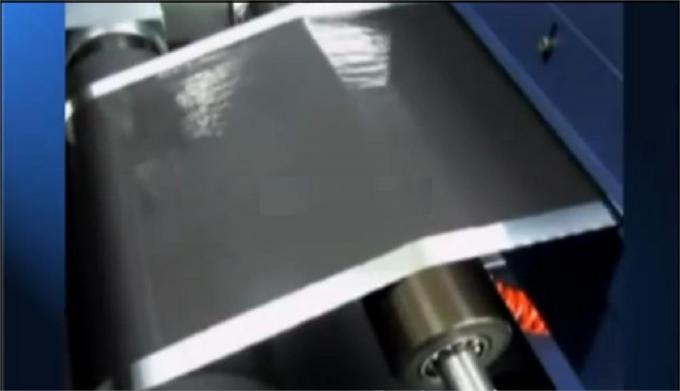Battery Electrode Coating Market Embracing Graphene Nanomaterials for Enhanced Battery Performance

As the global demand for sustainable energy solutions and electric mobility surges, the Battery Electrode Coating Market has emerged as a vital component in the evolution of advanced battery technologies. This market is witnessing significant innovations that are reshaping the performance, durability, and sustainability of lithium-ion and other battery types. These technological advancements are not only enhancing energy density but also improving safety, charge rates, and lifecycle efficiency—critical factors in the growing electric vehicle (EV), consumer electronics, and grid storage sectors.
Rise of Nanomaterial Coatings
Nanotechnology has revolutionized the electrode coating process. Traditional slurry-based coating methods are being supplemented or replaced with nanomaterial-based coatings that allow for thinner, more uniform layers with higher conductivity and better thermal stability. Coatings made from materials like graphene, carbon nanotubes, and silicon-based nanocomposites provide superior mechanical strength and electrochemical performance. These nano-enhanced coatings contribute to faster charge-discharge cycles and improved battery life.
In particular, graphene coatings have shown promise in reducing internal resistance and allowing higher charge transfer rates, making them ideal for high-performance EV batteries. Several research institutions and companies are investing in scalable production methods for these advanced nanomaterials to meet rising commercial demands.
Dry Electrode Coating Technology
One of the most groundbreaking innovations in the market is dry electrode coating technology. Unlike conventional wet coating processes that rely heavily on toxic solvents like NMP (N-Methyl-2-pyrrolidone), dry coating eliminates solvent usage entirely. This not only reduces environmental impact but also cuts down production costs and time.
Tesla and other major battery manufacturers are actively developing and piloting dry electrode methods, which can reduce battery weight and increase energy density. This approach is particularly promising for next-generation solid-state batteries, where compatibility with solid electrolytes is crucial.
Advanced Binders and Additives
Another key innovation in the battery electrode coating market involves the use of advanced polymer binders and performance-enhancing additives. Traditional binders like PVDF are now being replaced or modified to improve adhesion, flexibility, and ionic conductivity. Innovations such as water-based binders reduce environmental hazards and facilitate safer manufacturing processes.
Furthermore, additives that control particle dispersion and improve slurry rheology are helping manufacturers achieve more consistent coating thicknesses. This, in turn, reduces defects and enhances the overall quality and uniformity of the electrodes.
AI and Automation in Coating Processes
Digitalization is also leaving its mark on the battery electrode coating market. Artificial intelligence (AI) and machine learning algorithms are being integrated into the coating process to monitor parameters in real time, predict material behavior, and optimize production settings. Automated inspection systems using computer vision are being used to detect surface defects, layer inconsistencies, and alignment issues instantly.
Smart factories equipped with these technologies are helping battery producers minimize wastage, reduce energy consumption, and ensure higher throughput. This is especially crucial as battery gigafactories scale up production to meet global EV demands.
Focus on Sustainability and Recycling
With growing environmental concerns, innovations are also focusing on making the electrode coating process more sustainable. Researchers are developing recyclable coating materials that can be easily separated during battery recycling. Additionally, solvent-free coating techniques and energy-efficient drying processes are being adopted to reduce the carbon footprint.
Efforts are also underway to improve coating compatibility with recycled battery materials, which is essential for closing the loop in battery production and minimizing reliance on virgin resources like lithium and cobalt.
Regional Innovation Hotspots
Asia-Pacific, particularly China, South Korea, and Japan, continues to dominate in battery electrode coating innovation due to strong government support, established battery manufacturing infrastructure, and ongoing R&D investment. However, North America and Europe are catching up rapidly, with several startups and legacy automakers investing heavily in localized production and innovation hubs.
Governments across regions are funding research initiatives and offering incentives for companies to develop green manufacturing practices and next-gen battery technologies. This global push is accelerating innovation across the entire electrode coating supply chain.
Future Outlook
The battery electrode coating market is set for transformative growth over the next decade, driven by the electrification of transport, renewable energy integration, and growing consumer demand for high-performance electronics. Continuous innovations in materials, manufacturing processes, and sustainability practices will determine the competitive landscape and shape the future of energy storage solutions.
As the industry matures, collaborations between material scientists, engineers, and automation experts will be crucial to driving scalable, efficient, and eco-friendly innovations. The companies that can successfully integrate cutting-edge technologies while maintaining cost efficiency will be the ones leading the next era of battery development.
- Art
- Causes
- Crafts
- Dance
- Drinks
- Film
- Fitness
- Food
- Games
- Gardening
- Health
- Home
- Literature
- Music
- Networking
- Other
- Party
- Religion
- Shopping
- Sports
- Theater
- Wellness


